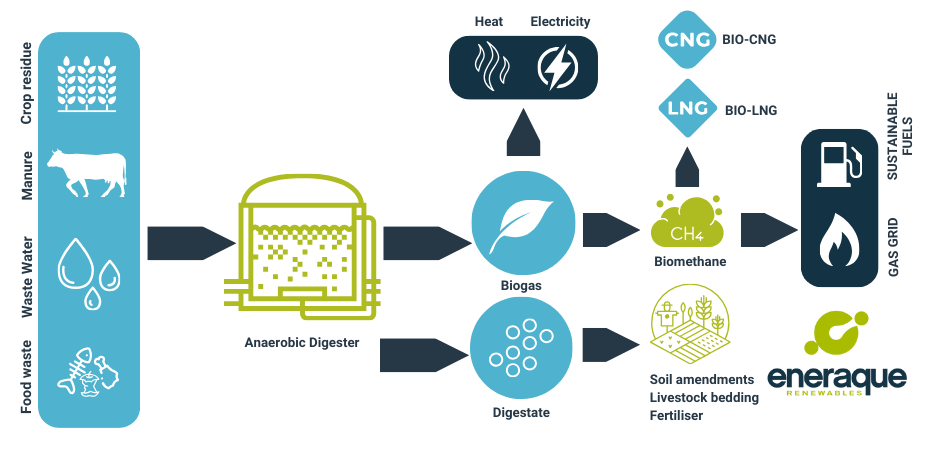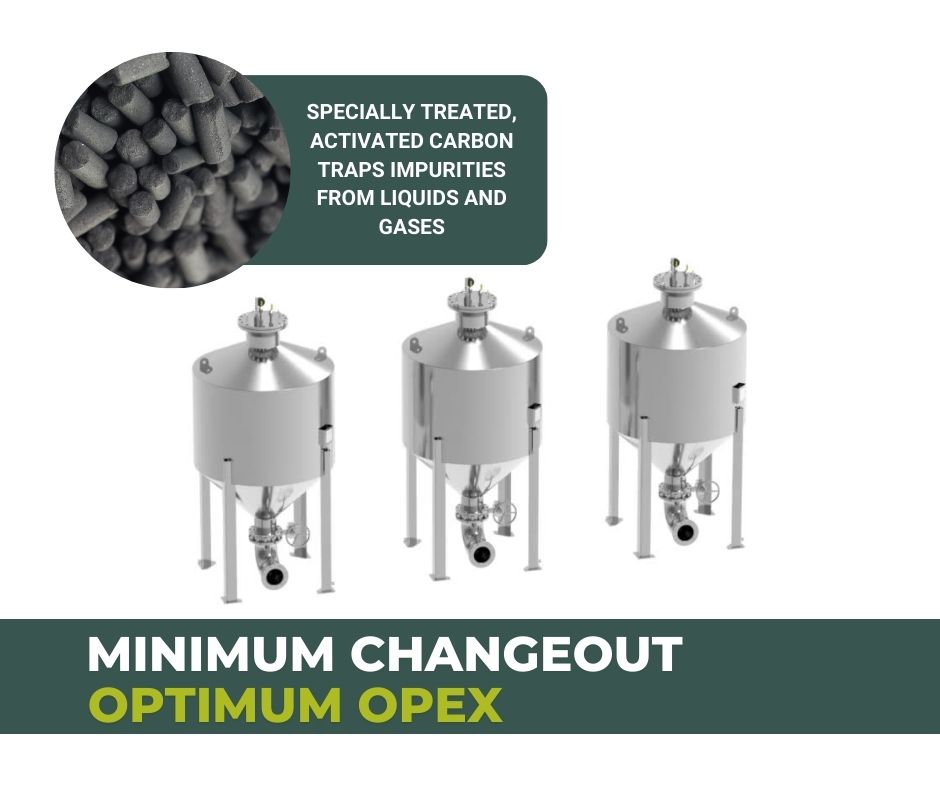This simple diagram illustrates the transformation of organic waste into clean, renewable biogas.
Biogas plants primarily function by breaking down organic materials such as agricultural waste, food scraps, manure, and sewage in an oxygen-free environment through a process called anaerobic digestion. This decomposition produces biogas—a mixture of methane and carbon dioxide—alongside nutrient-rich biofertilisers.
The utilisation of biogas in energy production not only displaces the need for fossil fuels, reducing greenhouse gas emissions, but also addresses the carbon footprint associated with its combustion. While biogas combustion generates carbon dioxide (CO2), the carbon in biogas originates from organic material that initially absorbed carbon from the atmosphere, rendering the process carbon neutral. By diverting organic waste from landfills to biogas plants, methane and CO2 emissions from decomposition are prevented, actively contributing to greenhouse gas reduction. Furthermore, biogas plants produce nutrient-rich biofertilisers, fostering sustainable agriculture and promoting a circular economy. These facilities, with the potential for carbon capture technologies, play a crucial role in the transition to sustainable energy and waste management, offering a holistic solution that simultaneously addresses climate change, renewable energy generation, and resource optimisation.








